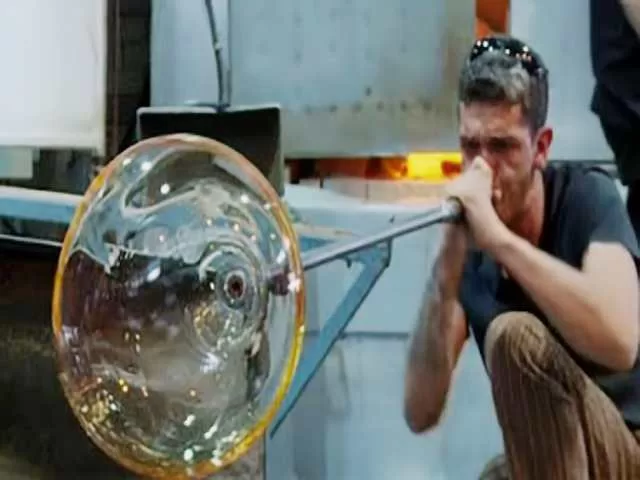February 26: In the realm of innovation, some inventions stand as transformative milestones. On this date in 1895, Michael Joseph Owens, an American inventor, received a patent for his groundbreaking glass-blowing machine. This invention, with its 6 to 20 arms, forever changed the landscape of glass manufacturing.
While the art of glass blowing dates back to ancient times, Owens’s machine elevated the craft to new heights by automating the process and significantly increasing efficiency. Before delving into the intricacies of Owens’s invention, let’s journey into the history of glass blowing itself.
Glass blowing, an ancient craft practiced even before the time of the Roman Empire, involves shaping molten glass using various tools and techniques. Traditionally, skilled artisans would manipulate the hot liquid glass by blowing through a tube, creating intricate and delicate objects. However, this method was time-consuming and limited in its production capacity.
Michael Owens, a pioneer in the glass industry, recognized the need for innovation. His glass-blowing machine was a game-changer, allowing for the mass production of glass containers. The machine’s multiple arms facilitated the simultaneous creation of several bottles, a revolutionary concept in the late 19th century.
The automated process didn’t end with the shaping of the glass. Once the bottles were complete, they were efficiently cut loose by the machine and transported by a conveyor belt to the annealing oven. The annealing process involved slowly cooling the glass, a crucial step that enhanced its strength and reduced brittleness.
Owens’s machine was a marvel of its time, streamlining the entire glass-making process. A later version of the machine could produce an astonishing four bottles per second, a testament to the efficiency and productivity it brought to the industry. In total, Michael Owens received more than 45 patents for his various glass-blowing apparatus, solidifying his legacy as a key figure in the evolution of glass manufacturing.
To gain a deeper understanding of the artistry involved in glass blowing, one can explore videos showcasing the traditional hand-blown glass technique. Witness skilled artisans using various tools to craft intricate pieces, highlighting the craftsmanship that predates the industrialization of the process.
For those intrigued by the industrial side of glass manufacturing, there are videos providing insights into the production of glass bottles in factories. These videos shed light on the step-by-step process of creating machine-made glass containers, offering a fascinating look into the world of mass production.
If the world of glass blowing captivates your interest, consider exploring local glass-blowing shops, classes, or museums. Many places offer opportunities to witness this ancient craft in action, providing a firsthand experience of the mesmerizing dance between fire and glass.
In commemorating Michael Joseph Owens’s patent on this day in 1895, let us reflect on the profound impact his invention had on the world of glass manufacturing. From ancient traditions to industrial marvels, the art of glass blowing continues to evolve, and Owens’s machine remains a pivotal chapter in this enduring story.

